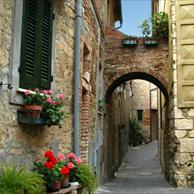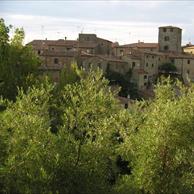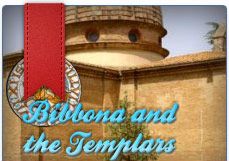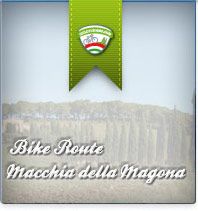

Bibbona
Located in the middle of a wide countryside, interrupted by suggestive views of the coast, Bibbona represents a destination that really permits to live a holiday in a deep contact with the nature. The typical Medieval Village of Bibbona, characterized by narrow alleys, steps and arches, that bring us back in the past, is located few KMs from the sea, surrounded by the typical hilly villages of Bolgheri, Castagneto Carducci, Campiglia… The village has ancient Etruscan origins, to which is dated the “Capro”, an original bronzed statue, become symbol of the town, and nowadays kept in the Archaeological Museum of Firenze. Within the small centre we can find the Castle of Bibbona, enclosed by the majestic walls and the Church of San Ilario, dated 1175 and enlarged in the following centuries, that constitutes one of the few Romanesque churches conserved in this area, the only one saved from wars and raid of pirates. It was built with local stone and inside conserves a marbled stoup and some paintings dated XVI° century, like a cloth depicting San Ilario and San Bartolomeo.
The Church of Santa Maria della Pietà dates 1482, at the bottom of the Castle of Bibbona, was built to house the venerate St. Mery’s image, who made miracles, painted on a rock under the castle, to which Girolamo Savonarolà dedicated a poem. The particular Latin epigraph “This is a terrible place” on the façade (quotation of a biblical verse) and the plan of a Greek cross, that recall the Church of Santo Sepolcro in Gerusalemme, are even today at the centre of studies and researches. Very interesting also the presence of a grave of a Knight of Tau in the center of the nave. It seems that the designers were Ranieri Tripalle and Vittorio Ghiberti, and that also Leonardo da Vinci contributed to design the church.
Why Leonardo? It’s more clear if we think to the church Rennes-Le-Chateaux in France, and to Leonardo as Master of the Priorato of Sion, Association that founded the Templars. It’s interesting to note, in fact, that in the architrave of access to the Church there is the same epigraph “Terribilis est locus iste”. Near the new Townhall we find the Fonte di Bacco, that includes the ancient Arch, where are still visible some mysterious symbols. From here the water came down and raised the faucet of the Bacchina and the Bacco, depicted with bunches of grapes in the hairs and a flask in a hand, and ended up in the wash-tub and in the trough situated below.













